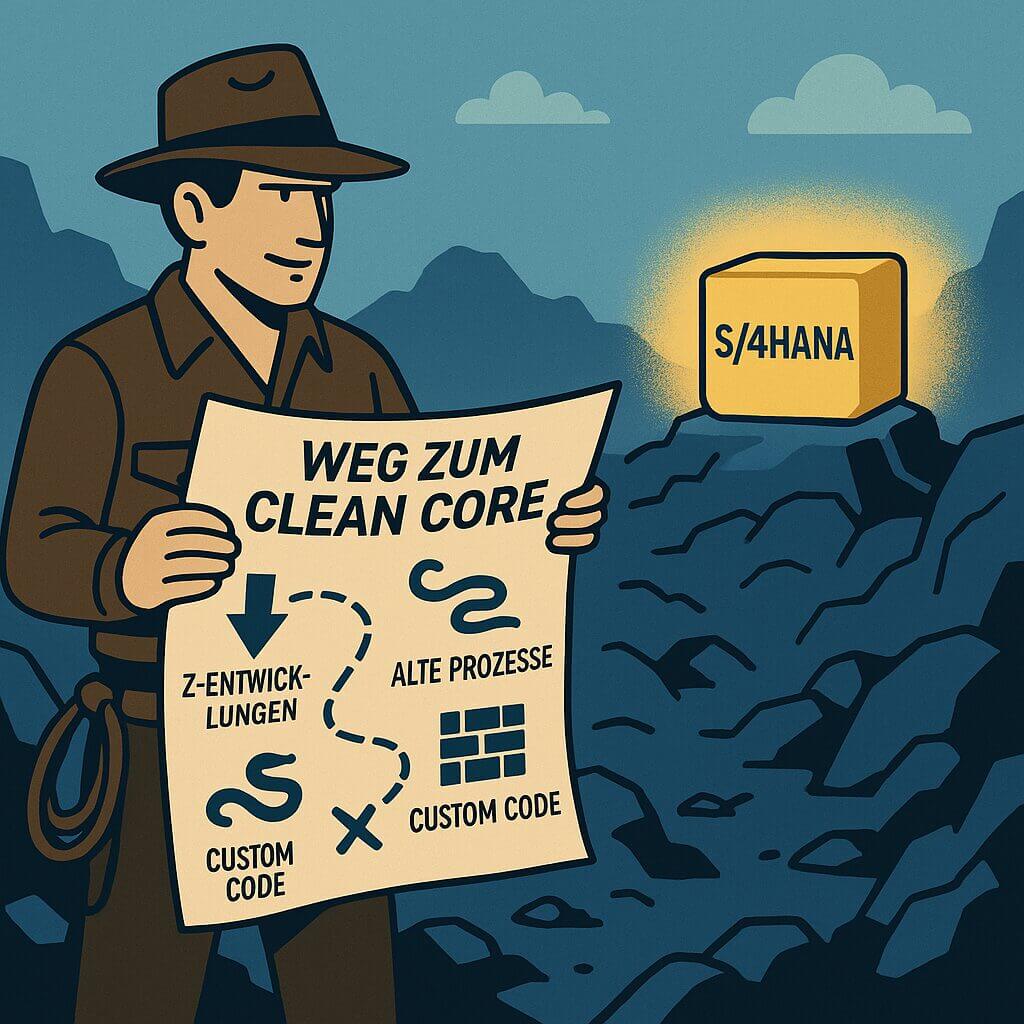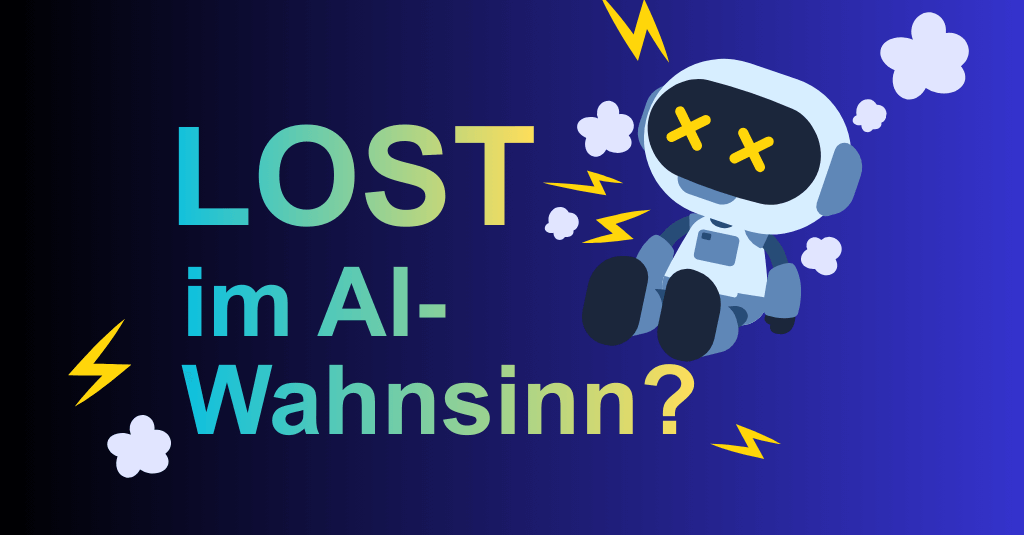Table of contents
“Clean Core” – the buzzword echoes through every SAP conference, every strategy meeting and every CIO presentation. It is the promise of an agile, update-proof and future-proof ERP world. But while everyone is talking about it, the reality in most companies looks bleak. Overgrown landscapes, custom code accumulated over decades and countless modifications have created a “dirty core” that stifles innovation and devours budgets. The good news? There is a way out. But it requires more than just good intentions.
The brutal truth: Your SAP core is dirtier than you think
Before we talk about solutions, we need to understand the scale of the problem. A much-cited analysis by WestTrax, a specialist in the automated analysis of SAP systems, reveals a shocking figure: in many SAP ERP systems, most customer-specific developments (custom code) are no longer used. This code graveyard is not a harmless legacy. It is an active risk.
Every line of unused code incurs costs – for maintenance, for tests during upgrades, for training new developers. According to SAP, an average in-house development (ABAP) costs around €5,000 to create and a further €500 a year to maintain, regardless of its use. Extrapolate that to thousands of Z transactions and you can see the financial disaster. A “dirty core” not only slows down your S/4HANA transformation, it makes it exponentially more expensive and risky. It’s a handbrake on your digital agility and a gateway to security vulnerabilities.
A system that consists of 90% ballast cannot take off. The first step to recovery is an honest diagnosis.
Three strategies for a really clean core
The clean core strategy is not a monolithic concept. It is a toolbox of pragmatic approaches that can be combined depending on the level of maturity and business requirements. Here are three tried-and-tested approaches that have proven themselves in practice.
Strategy 1: Radical housekeeping – more than just cosmetics
Technical perspective: This is the most fundamental and important step. It is about systematically identifying and eliminating unused code ballast. Tools such as the
Business perspective & cost analysis: The ROI is directly measurable here. The elimination of thousands of unused objects reduces maintenance costs, drastically shortens the test cycles for upgrades and lowers operating costs. A practical example shown in the Simplifier analysis [1] illustrates the potential: the modernization of a single transaction (“stock information to orders”) for 16 users promised potential savings of €24,000. The investment in an automated analysis, which often only takes a few hours, pays for itself almost immediately by avoiding unnecessary migration and maintenance costs.
Case study: A medium-sized manufacturing company used a data-driven analysis to scrutinize its custom code. Of over 4,000 Z objects, only around 300 were in intensive use. The project team decided to keep or modernize 152 critical transactions and decommission the rest. The savings in annual maintenance costs alone exceeded €100,000, and the duration of the next release change was halved.
Strategy 2: Encapsulation via APIs – the digital sarcophagus
Technical perspective: Not all custom code can or should be removed. Sometimes it contains business-critical logic that has grown over the years. Instead of leaving this directly in the core, it is encapsulated. This means that the functionality is “hidden” behind a stable, standardized interface (API). New applications then no longer access the old code directly, but only this clean API. This can be done via in-app extensions with the ABAP RESTful Application Programming Model (RAP) or via side-by-side scenarios on the
Business perspective & cost analysis: This strategy creates a bridge between legacy and modernity. It increases agility as new apps (e.g. mobile applications or portals) can be connected quickly without having to understand the complexity of the legacy system. The initial costs lie in the development and management of the APIs. The savings result from massively accelerated development cycles for new projects and the reduction of integration risks.
Case study: The ANWR GROUP, a European trade cooperation, was faced with the challenge of adapting its contract management in the SAP Sales & Service Cloud (C4C), which would have been complex in the core. Instead, it used the low-code platform Simplifier to read data from C4C via OData interfaces (APIs), process it externally and write it back. This enabled a complex, business-critical process to be modernized without modifying the C4C core.
Strategy 3: Low-code side-by-side – outsource innovation, don’t give up
Technical perspective: This is the most consistent way to achieve a clean core. Instead of extending the core, new processes and applications are developed completely outside on an external platform – the so-called
Business perspective & cost analysis: The benefits are enormous: radically shortened time-to-market, lower total cost of ownership (TCO) and a higher speed of innovation. The pricing model is often a decisive factor. Simplifier offers a transparent, user-based model without transaction-based costs, which can quickly escalate with other platforms. For a major customer with 15,000 users, a cost advantage of over 1 million euros per year was calculated compared to SAP BTP. ROI is often achieved in less than 12 months.
Case study: Dräger, a leading manufacturer of medical and safety technology, needed to digitize a highly complex maintenance plan manager that could not be mapped using standard SAP tools. With Simplifier, the business-critical application was implemented productively
Conclusion: Clean Core is not a goal, but a decision
The “clean core” is not a myth invented by consultants. It is a strategic necessity for any company that wants to survive in the digital economy. Fear of the complexity of your own system landscape should not be an excuse for standing still.
The three paths presented – radical housekeeping, encapsulation via APIs and outsourcing to low-code platforms – are not either-or options. They are a combinable portfolio for you as an IT decision-maker. Start with data-supported analysis to get rid of the ballast. Encapsulate what needs to stay in order to become agile. And outsource what needs to be created in order to be fast.
Ultimately, the decision for a clean core is not a technical one, but an entrepreneurial one. It is the decision between stagnation and growth, between complexity and efficiency, between high costs and sustainable ROI. It is the decision to actively shape the future of your company instead of letting the past manage it.



